The cathedral of Florence, Italy (Santa Maria del Fiore) is an architectural marvel. Yet its construction was marked by a three-decade-long fight between its most famous architect and his bitterest rival. This story’s got politically-motivated arrests, fine Renaissance art, a papal intercession, libel, and even a jewel theft! It makes amazing inspiration for an RPG adventure centering around two such luminaries.
This post is brought to you by beloved Patreon backer Joel Dalenberg. Thanks for helping keep the lights on! If you want to help keep this blog going alongside Joel, head over to the Patreon page – and thank you!
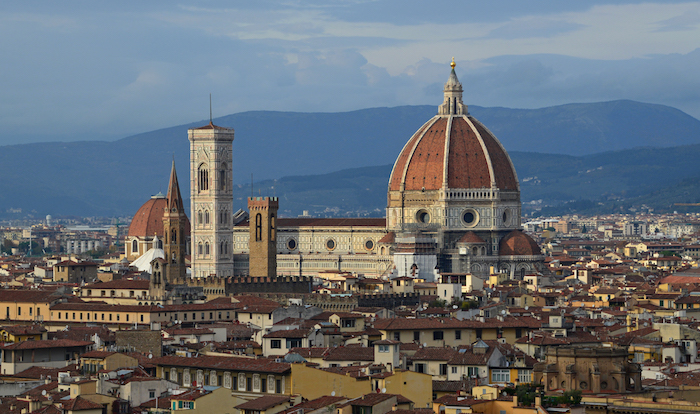
Image credit: Clément Bardot. Released under a CC BY-SA 4.0 license.
Our story begins in 1366 in Florence, an in-between kind of city in Tuscany. It was ostensibly a republic, but only the wealthy could vote and certain great families dominated the city. It was large and wealthy enough to be a regional power, yet small enough that it had farm fields within the city walls. And while the wool merchants’ guild had been building a cathedral for their city for seventy years, only one end of the building was anywhere close to finished.
The cathedral didn’t have much of a plan. There had been a model, but it collapsed under its own weight sometime in the mid-1300s. The builders were now making it up as they went along. In 1366, the wool merchants’ guild announced a competition to build a new model. Essentially, it was a competition to design a building whose structural ‘bones’ were already half-built. If this were an aircraft, they’d be building it mid-flight!
The winner was a master mason named Neri di Fioravanti. The defining feature of Neri’s design was an enormous dome. When scaled up, the dome would be wider and taller than the largest dome in the world at that point (the Pantheon in Rome). Its base – where the dome began – would be higher than the tallest gothic cathedrals. (As an aside, the model was large enough to walk inside of and was later turned into a public urinal.) To keep his model from collapsing in on itself like the earlier one had, Neri built his model dome as two separate domes. Both started from the same ring atop the cathedral. The inner dome was shorter and bore the structural load, while the outer (and upper) dome was taller and served a largely aesthetic purpose. The dome had no buttresses to support it. Buttresses were favored architectural elements of Florence’s traditional enemies in Germany, France, and Milan. The future symbol of Florence would not rest upon enemy supports!
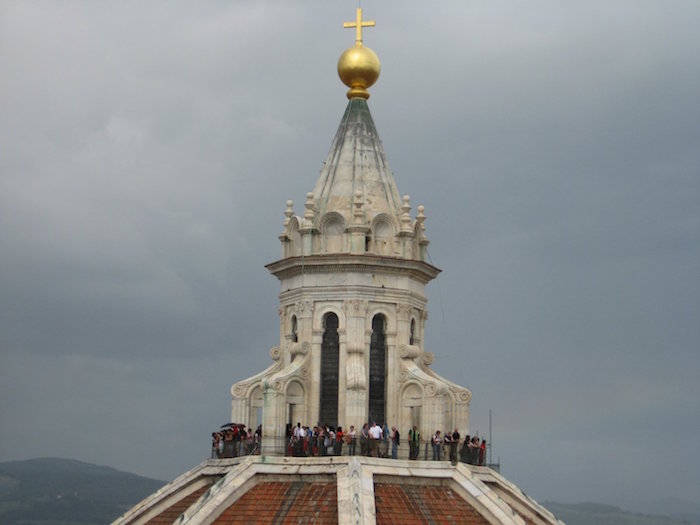
Image credit: Senpai. Released under a CC BY-SA 2.5 license.
A committee of wool merchants selected Neri’s design, the voting public endorsed the decision in a 1367 plebiscite, and every year from then on, the cathedral’s wardens swore on a Bible that they’d realize Neri’s vision.
There was only one problem: no one knew how to do that. This was an era before math was used in engineering. Everything was guesswork. Mostly, architects just copied existing designs that were known to work. Builders copied existing techniques to complete those designs. Neri’s model was utterly unprecedented. Even if its final state could exist without collapsing (now an article of religious and political faith in Florence), how could it be built? How could the huge weight of stone be lifted in the air higher than any stones had been carried before? How could the dome be kept from collapsing while it still had a giant, incomplete hole in the middle of it? Neri could offer nothing more than his confidence that God would make it happen. Work continued on the lower elements while Florence waited for its miracle.
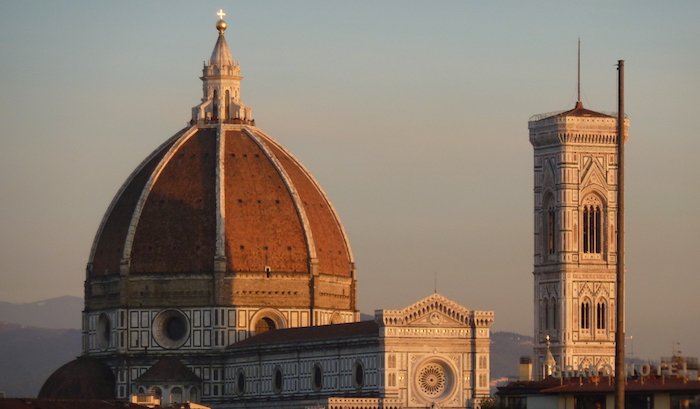
In 1418, the wool merchants’ guild announced another competition. This one was for the design of the dome: a plan to turn Neri’s vision into reality. The winner of the competition would earn more than a skilled craftsman could earn in two years. Masons, carpenters, cabinetmakers, and goldsmiths from across Tuscany competed. But all eyes were on the two foremost competitors. Filippo Brunelleschi and Lorenzo Ghiberti were two of Florence’s greatest Renaissance luminaries. Brunelleschi was short and severe-looking. He was deeply secretive. He wrote nothing down, lest his ideas be stolen and monetized by lesser minds. Though his talents were varied, his great passion was for mechanisms like clocks, cranes, and boats. Brunelleschi’s rival, Ghiberti, had an avuncular smile, a round face, and a big, fleshy nose. He was first and foremost an artist and is still famous for his bronze sculptures. Ghiberti was rumored to be a bastard, the son of the man who was legally his stepfather.
This wasn’t the first time Brunelleschi and Ghiberti had squared off. In 1402, they competed to design a bronze panel showing Abraham’s sacrifice of Isaac for the doors of the Florence Baptistery. Both men were certain their individual genius would carry the day. They easily bested the other seven competitors, but the judges had a devil of a time choosing between Brunelleschi’s and Ghiberti’s designs. Brunelleschi’s composition was contorted and aggressive. Ghiberti’s was graceful and a greater technical feat. The prize went to Ghiberti, who was commissioned to cast the remaining panels needed for the baptistery doors. An outraged Brunelleschi quit Florence for fifteen years and never worked in bronze again.
But Brunelleschi came back to Florence for the competition to design the cathedral dome. By now he was best known for weird treasure-hunting adventures in Rome and for discovering the mathematical principles underlying perspective. Ghiberti was best-known for irritating perfectionism. The baptistery doors still weren’t done, nor were several other projects he’d since taken on. Both men submitted models that added subtle features to Neri’s original design that might make it feasible. Furthermore, Brunelleschi made it known he’d designed machines to make the work possible, but he wouldn’t reveal them until he’d won the competition. As on the baptistery doors, Brunelleschi and Ghiberti easily edged out the other competitors. But the wool merchants’ guild couldn’t decide between the two designs. They dithered for over a year.
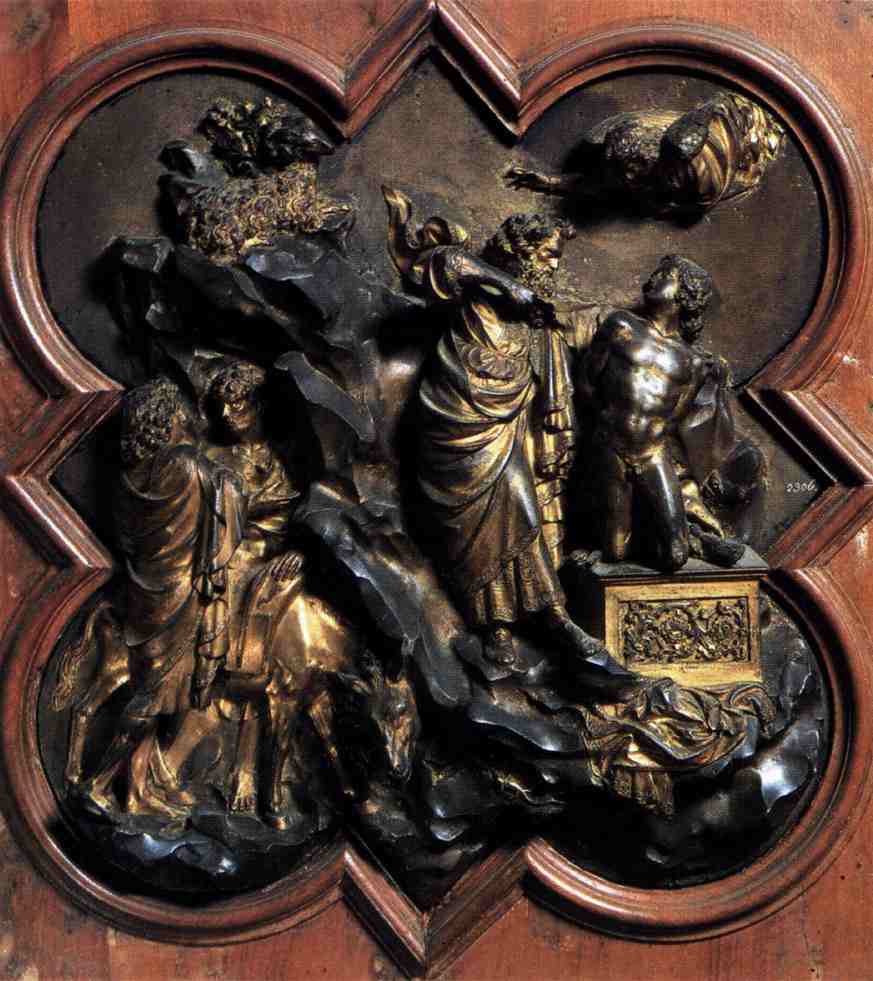
In 1420, the guild announced a most vexing result: both designs were accepted. The two rivals would have to work together to oversee the dome’s construction. Up to this point, work on the cathedral was overseen by a single capomaestro. Brunelleschi and Ghiberti would both be appointed capomaestros, working alongside the existing capomaestro, a master mason. And the wool merchants’ guild appointed a fourth capomaestro for good measure: an aged humanist philosopher named Giovanni Gherardi. Gherardi was the odd man out in the foursome. He quickly became Ghiberti’s man and sought to foment trouble for Brunelleschi.
So work on the dome began. Innovation after innovation was required to make it work. Almost all came from Brunelleschi. He figured out how to hide ‘chains’ made of iron and stone in the circumference of the dome to act like the hoops around a barrel. He built a huge ox-powered crane with the world’s first clutch to hoist the long stone blocks to the top of the cathedral. He cast bricks in new shapes so they wouldn’t slide off the tilting dome. He designed a whole new kind of arch. I am neither an architect nor an engineer, so I’m glossing over these solutions and why they were necessary. I ask your forgiveness.
All the while Ghiberti fumed and backbit, yet offered few solutions of his own. He was being just as petty as Brunelleschi had been when he fled Florence for fifteen years. Then it came time to build another circumferential chain, this one of chestnut wood. Brunelleschi’s and Ghiberti’s models had both included such chains, yet neither included the details of how the logs in such a chain would be fastened together. All of a sudden, Brunelleschi took to his bed, complaining of illness. All eyes turned to Ghiberti to pick up the slack and start work on the wooden chain. As soon as Ghiberti installed three logs (and thereby tipped his hand as to how he would do the attaching), Brunelleschi leapt from his bed, miraculously cured. He climbed the dome, inspected Ghiberti’s partial chain, proclaimed it garbage, and had it rebuilt under his own (Brunelleschi’s) direction. For conveniently discovering these flaws, Brunelleschi wheedled a salary increase out of the wool merchants’ guild. Six months later, the guild suspended Ghiberti’s salary.
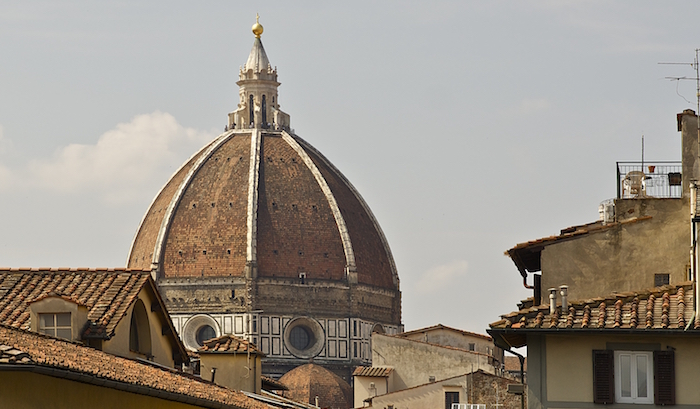
It is important to note that, to an outside observer, either architect could have been right. During the construction of the dome, two of Brunelleschi’s other projects failed catastrophically. One was an amphibious barge to bring marble up the Arno River for the dome, but the design was flawed and all the marble fell overboard. The other was a dam to flood a town Florence was at war with, but the dam collapsed. Before math in engineering, you either copied a design known to be reliable (the safe way) or you did it by gut. That meant the wool merchant’s guild had literally no way to know whose gut – Brunelleschi’s or Ghiberti’s – was more likely to pull off this revolutionary design.
At about this same time, the fourth capomaestro, Ghiberti’s man Gherardi, made a play to discredit Brunelleschi with the wool merchants’ guild. He wrote the guild a letter claiming that Brunelleschi was building the dome at an angle too shallow to reach the heights dictated by Neri’s model. Since everyone involved had to swear on a Bible that they’d make Neri’s model a reality, this was a grievous accusation. It was also completely false. It was either an error or a lie. Brunelleschi defused the situation. The guild paid Gherardi an insulting pittance to ‘thank’ him for the warning, and kept him on the outskirts of the project. Ghiberti himself was briefly suspended. His faction had reached its lowest ebb, but would not stay there.
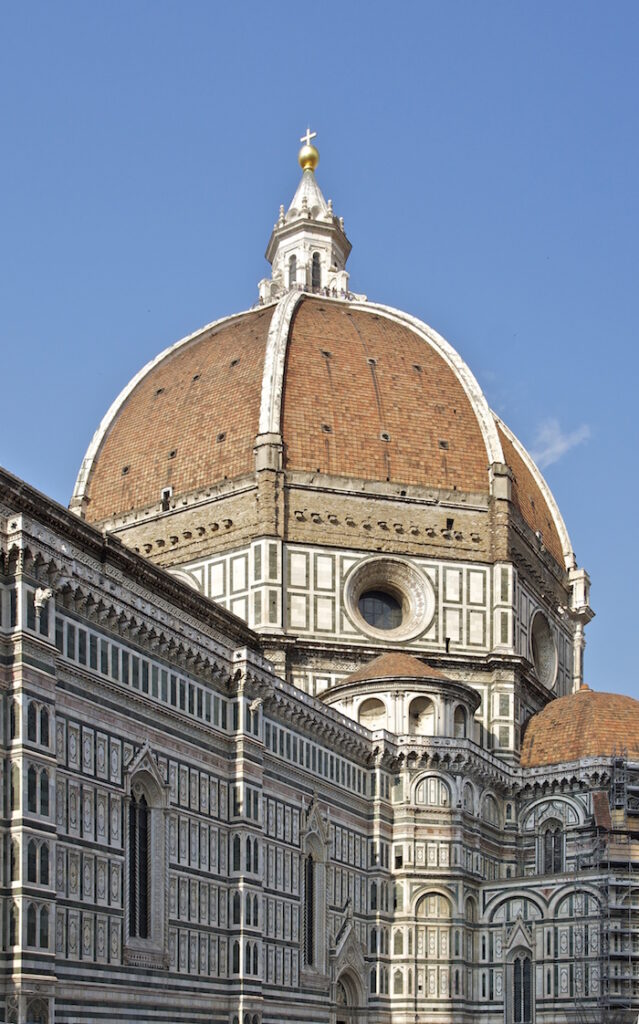
Things were changing in Florence. In 1433, a political faction managed to gather enough influence in the Florentine Republic to exile Cosimo di Medici, described by some as the city’s secret king. Cosimo di Medici was Brunelleschi’s quiet patron on the cathedral project. Brunelleschi, never much of a political player, was suddenly exposed. The enemies he may not have even realized he’d made were now ascendant. In 1434, he was arrested for practicing masonry without being a dues-paying member of the masons’ guild. No previous capomaestro had ever been required to join the masons’ guild or pay dues. The dues were a trivial amount, and many actual masons didn’t bother to pay them. But only Brunelleschi was arrested. Ghiberti, on the other hand, had joined the masons’ guild almost a decade earlier so his workshop could sell lucrative marble tombstones. Later in life, he’d play a leadership role in the guild. Whether the arrest was arranged by Ghiberti or by the anti-Medici political faction, the result was the same. Then things reversed. After two weeks in prison, Brunelleschi was released. The next day, a new pro-Medici government was elected. Cosimo di Medici returned from his exile after only a single year and Brunelleschi resumed his leadership of the cathedral project.
Less than two months later, another disaster struck Brunelleschi. Brunelleschi had an adopted son, Buggiano. Buggiano was also Brunelleschi’s apprentice. He was a skilled sculptor and craftsman. Yet Brunelleschi treated him harshly and neglected to pay him. So the twenty-two-year-old Buggiano pocketed a bunch of jewels and cash from Brunelleschi’s house and ran off to Naples. Florentine men were legally minors until age twenty-four, and Brunelleschi wanted his assistant and his money back! So he appealed to the Pope who appealed to the Queen of Naples who forced Buggiano to return to Florence with his stolen loot.
In 1436, the cathedral was consecrated, 140 years after work began, 70 years after Neri’s design, and 18 years after the competition to design the dome. The dome itself was consecrated five months later. Nonetheless, the dome still wasn’t finished. The ‘lantern’ atop it wasn’t even designed yet. (That would require yet another competition.) Ghiberti was given his final paycheck and removed from the project. Brunelleschi got to stay on. He kept drawing a salary until his death in 1446 at age 69. He was interred in the cathedral. He is still one of only two people buried there, the other being St. Zenobius, the cathedral’s patron saint. Ghiberti died in 1455 at age 77. Unlike his spendthrift rival, Ghiberti died wealthy, and may have gotten the last laugh.
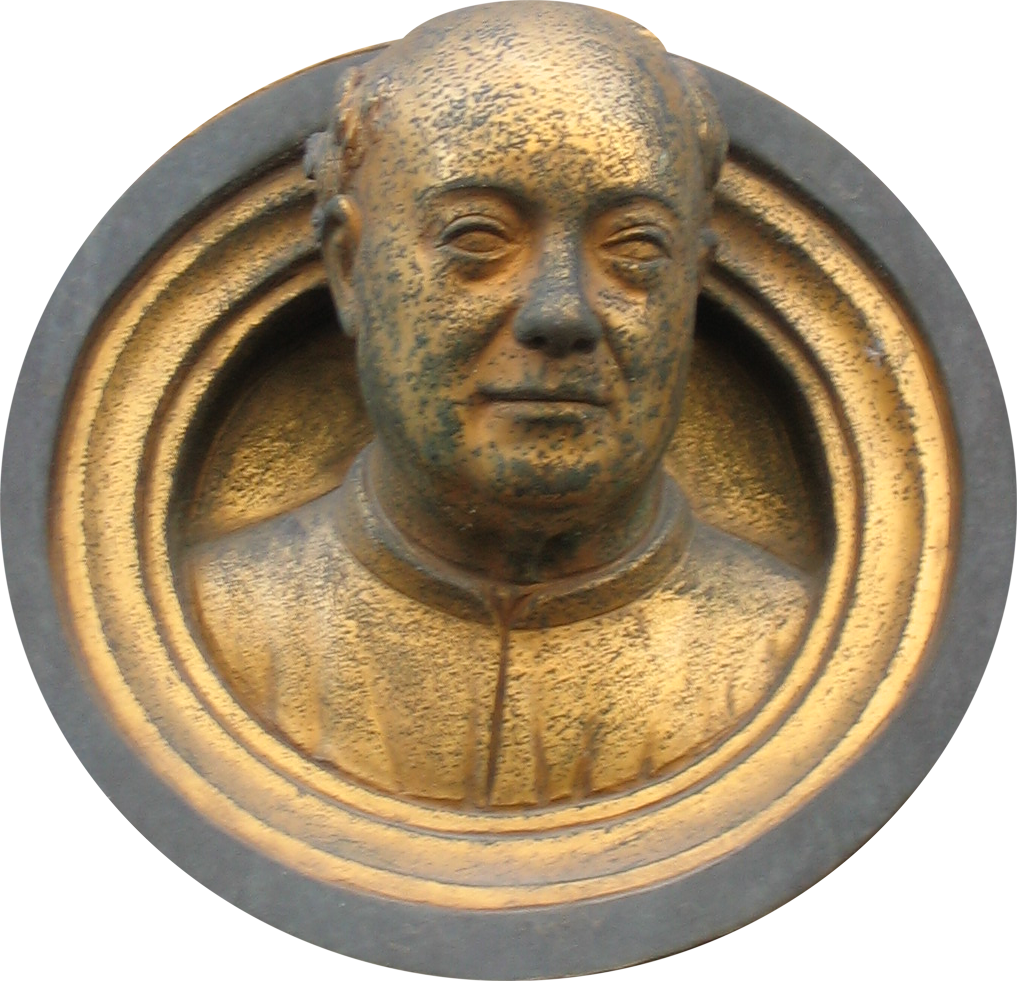
Image credit: Richardfabi. Released under a CC BY-SA 3.0 license.
In your fictional campaign setting, we can easily imagine a back-and-forth feud between two architects. Both employ the PCs to work towards their ends. Stage a series of competitions: for the design, the dome, the crane, the lantern – as many as your players find interesting. Each presents an opportunity for the PCs to be hired by one architect, or even by both!
– In a world with almost no patent or copyright laws, designers have good reason to keep their plans secret. If the PCs can steal – or even just observe – one architect’s model building or prototype machine, they can pass that to the other architect, who can fold its best elements into his own design and win this round of competition.
– If your fictional Brunelleschi-analogue is pretending to be sick to draw out your Ghiberti-analogue’s design, have Ghiberti hire the PCs to either expose the fraudulent illness or make Brunelleschi actually sick so he can’t lie (Ghiberti says it’s a lie, anyway) and say Ghiberti’s chains are no good, thereby damaging Ghiberti’s prestige.
– In real life, the unusual brick shapes Brunelleschi introduced resemble some found in Anatolia. There are also some years unaccounted for when Brunelleschi left Florence in a huff. In the fiction, maybe some of his architectural techniques were learned from unsavory sources abroad (even German or Milanese!) and could be used as blackmail against him.
– When Buggiano ran off, maybe he took with him Brunelleschi’s design for the latest competition. Your fictional version of the Queen of Naples is protecting him, so find a way around that and bring the design home! Or maybe he ran off with Ghiberti’s latest design, and Brunelleschi needs you to cover up his involvement.
– Deal with Gherardi’s untrue letter about Brunelleschi’s dome not being tall enough.
– Get Brunelleschi out of the way so Ghiberti can implement some innovations and regain his limelight
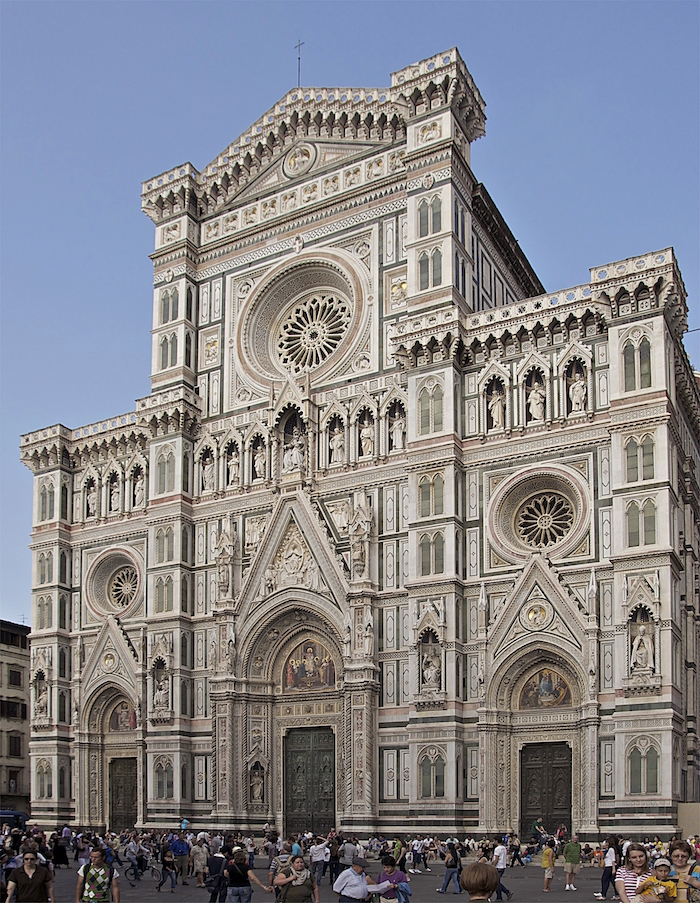
Playing both sides against the middle would be fun, but will probably get repetitive. You’ve got a couple solutions to this, and I recommend using all of them:
– Keep each competition brief. Give each no more than an hour of game time to play out. If at the end of an hour it’s not clear if the PCs will be successful, resolve it with a single roll. That way, no competition overstays its welcome, and you can wrap up this unusual adventure in two sessions – or maybe even one!
– Introduce a surprise halfway through akin to the exiling of Cosimo di Medici. That should throw a wrench into one of these competitions, as all the major players realign and the weak become strong.
– Eventually, there will probably be a falling out between one of the two fictional architects and the PCs. The party will cross some sort of line and the proud designer will no longer be able to bring himself to work with them. Then the PCs will no longer be able to play both sides agains the middle and will have to commit to one side.
Source: Brunelleschi’s Dome by Ross King (2000)






